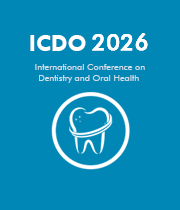Maxillofacial Pathology
Maxillofacial pathology is the study of diseases and lesions of the maxillofacial region, encompassing the jaw bones, soft oral tissues, and adjacent structures. Dentists, oral and maxillofacial surgeons, and dental specialists are well-versed in this branch of medicine, which sees a variety of cases, from periodontal cysts to oral cancer. Maxillofacial pathology often involves the analysis of biopsies. Clinicians examine tissue samples to accurately diagnose diseases of the mouth and adenoid structures. Imaging techniques are also used to diagnose and monitor various oral disorders. This involves the use of x-rays, computed tomography (CT) scans, magnetic resonance imaging (MRI) scans, and other measures. In addition to diagnosis, maxillofacial pathology also includes treatment and prevention of these conditions. In some cases, surgical intervention can be necessary. This surgery may involve removal of diseased tissue to assist with healing. Other treatments may include radiation therapy or chemotherapy, depending on the type of pathology. Maxillofacial pathology is an important area of medicine that has immense implications for both oral health and overall health. Not only does it diagnose diseases of the maxillofacial region, it also assists clinicians with providing the most effective treatments. Increased knowledge of maxillofacial pathology leads to better patient outcomes. Healthcare providers should stay up-to-date on advances in this field, as new breakthroughs are constantly being made. With further research, more treatments and therapies may become available, leading to improved quality of life for those afflicted with maxillofacial pathology. Further knowledge of this field is essential to keep both the oral and overall health of patients in optimal condition.

David Geoffrey Gillam
Queen Mary University of London, United Kingdom
Christopher Turner
Spacemark Dental, United Kingdom




Title : Evaluating hygienist follow up for head and neck oncology patients in secondary care: Results from a two cycle audit
Peter Basta, Newcastle Dental Hospital, United Kingdom
Title : Atypical facial pain unravelled
Christopher Turner, Spacemark Dental, United Kingdom
Title : New treatment of temporomandibular disorder through muscle balance and muscle regeneration by activation of quiescent muscle stem cells( satellite cells) with mitochondrial dynamics
Ki Ji Lee, National Reserach Foundation & Busan Medical University, Korea, Republic of
Title : MRONJ and ORN: Referral or management in primary care? Navigating guidelines in the context of long waiting lists
Alisha Sagar, NHS England, United Kingdom
Title : Managing the unexpected: An Insight into supernumerary teeth
Bahar Gharooni Dowrani, Guy's and St Thomas' NHS Foundation Trust, United Kingdom
Title : Laxative prescribing for post operative head and neck cancer patients at Derriford Hospital
Pui Sze Kylie Li, Cardiff and Vale University Health Board, United Kingdom